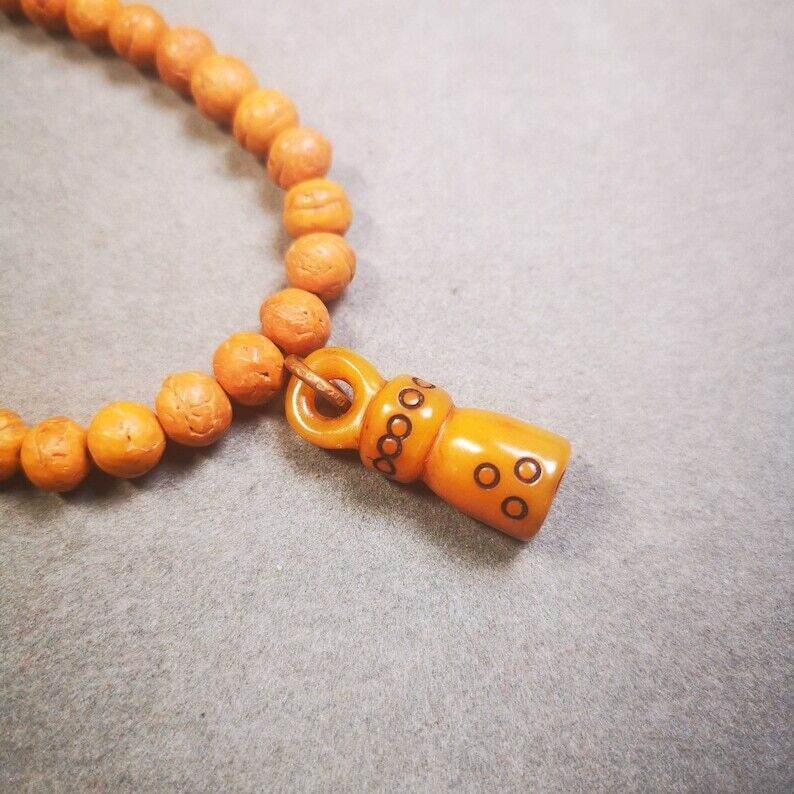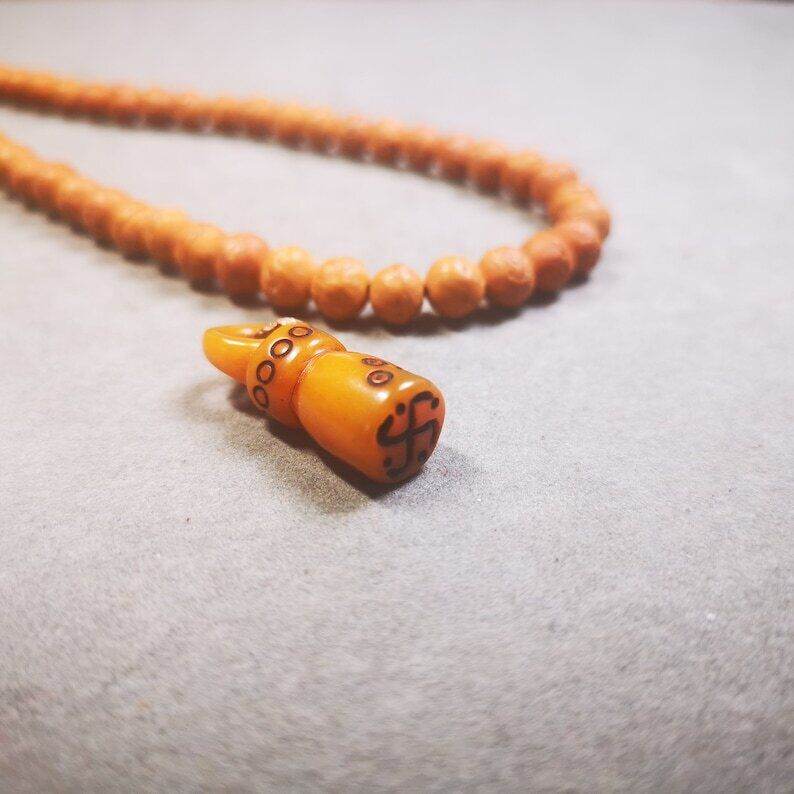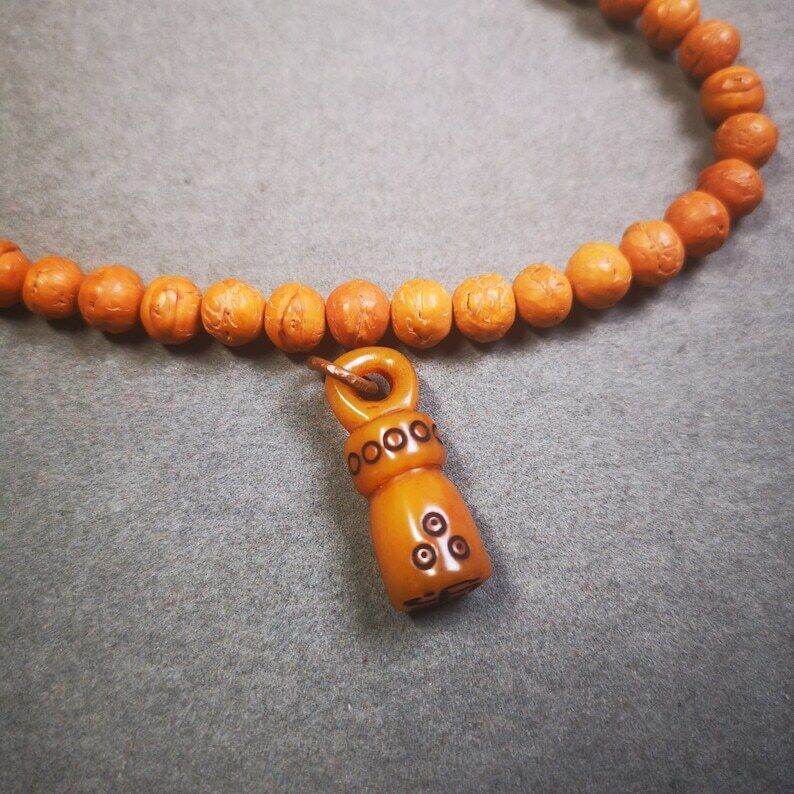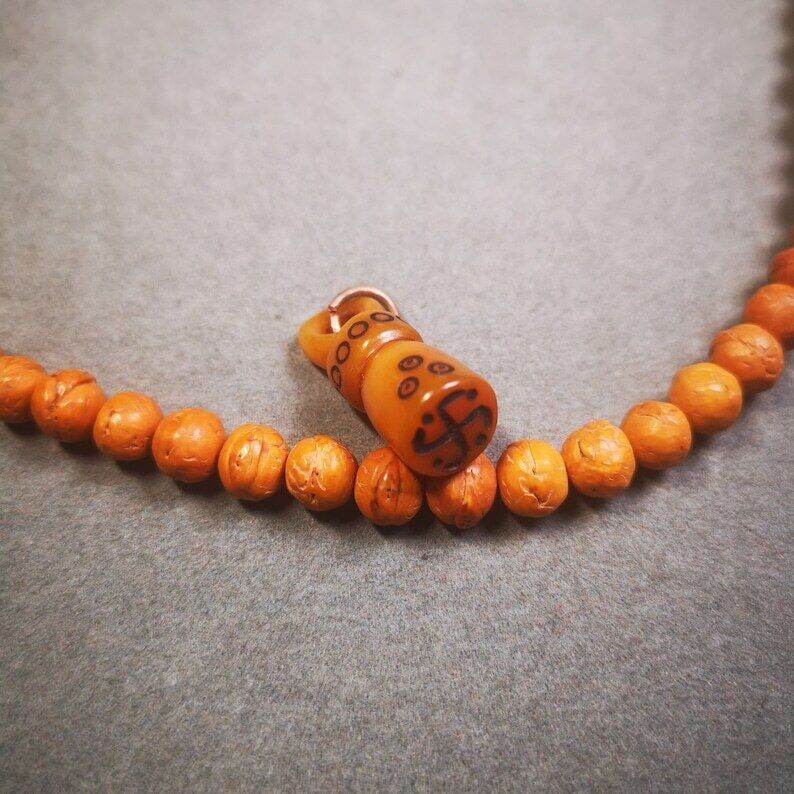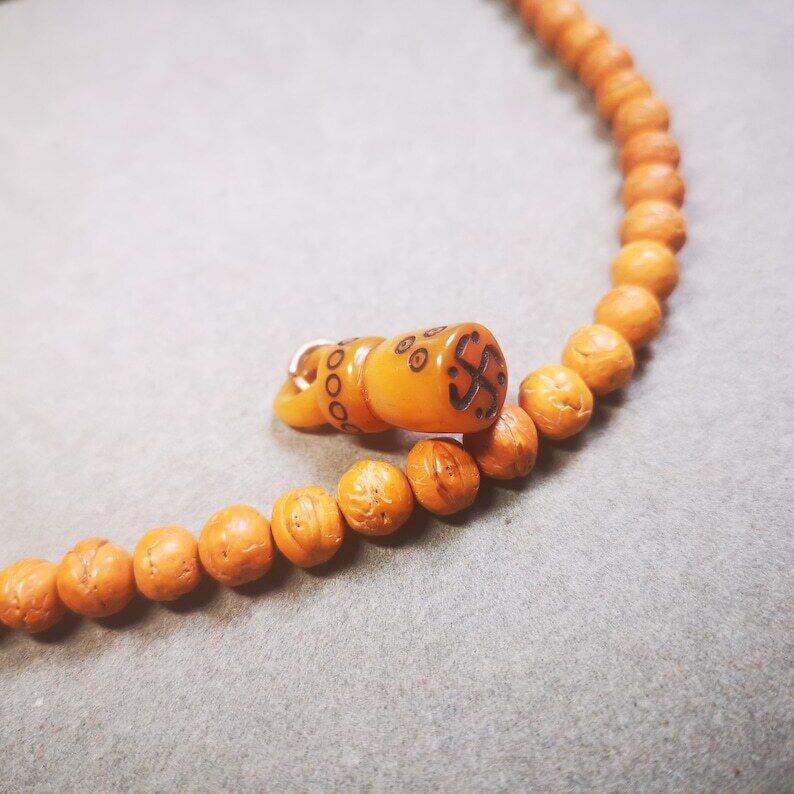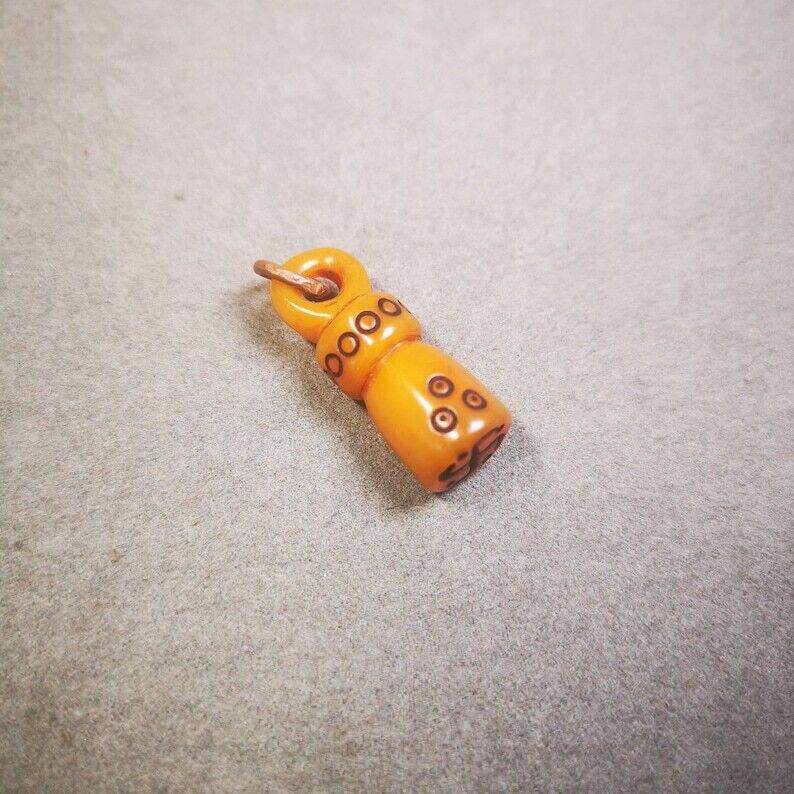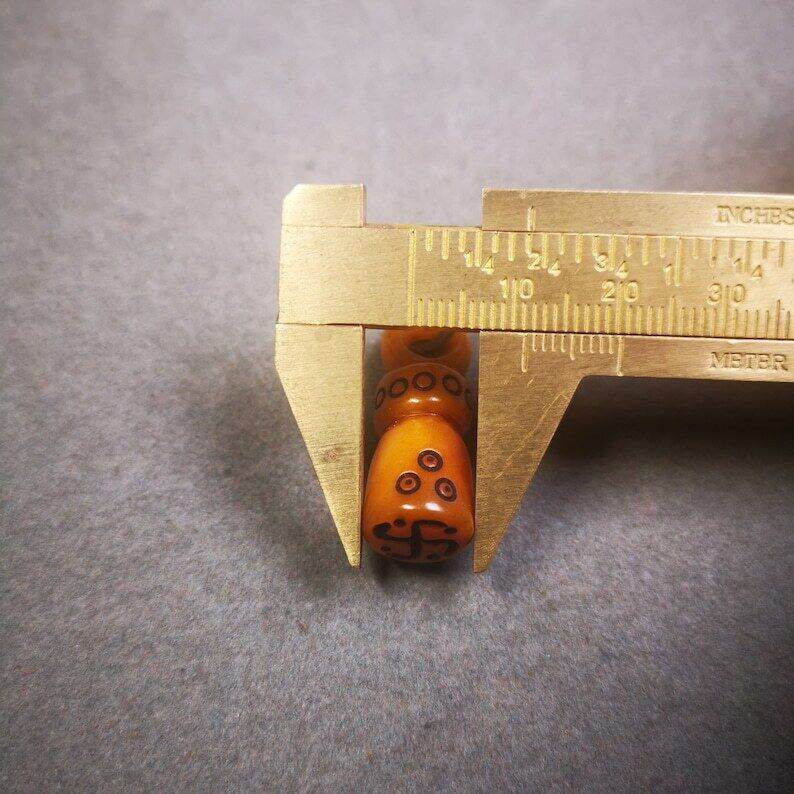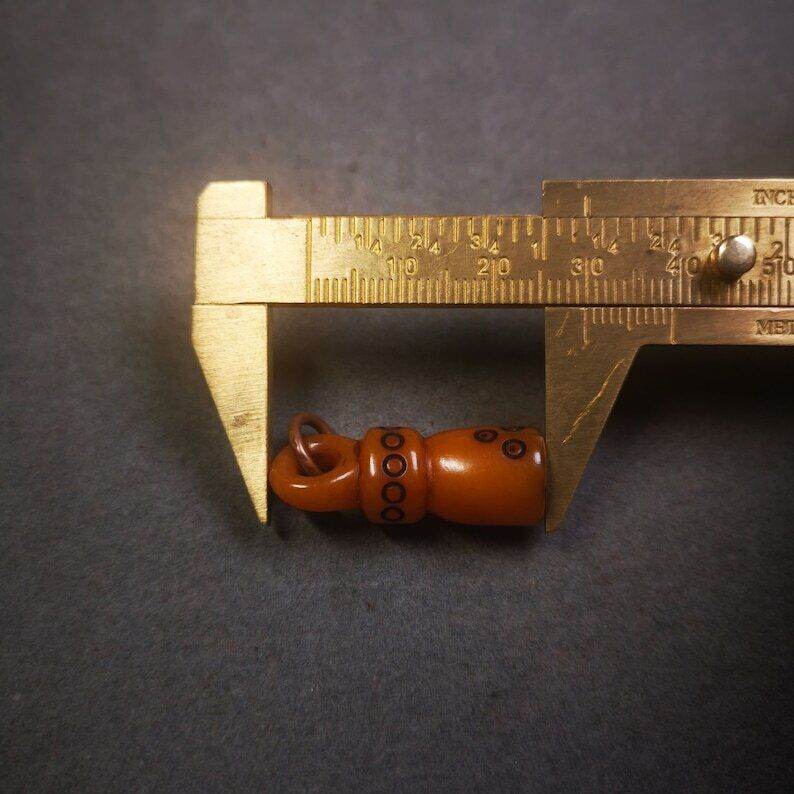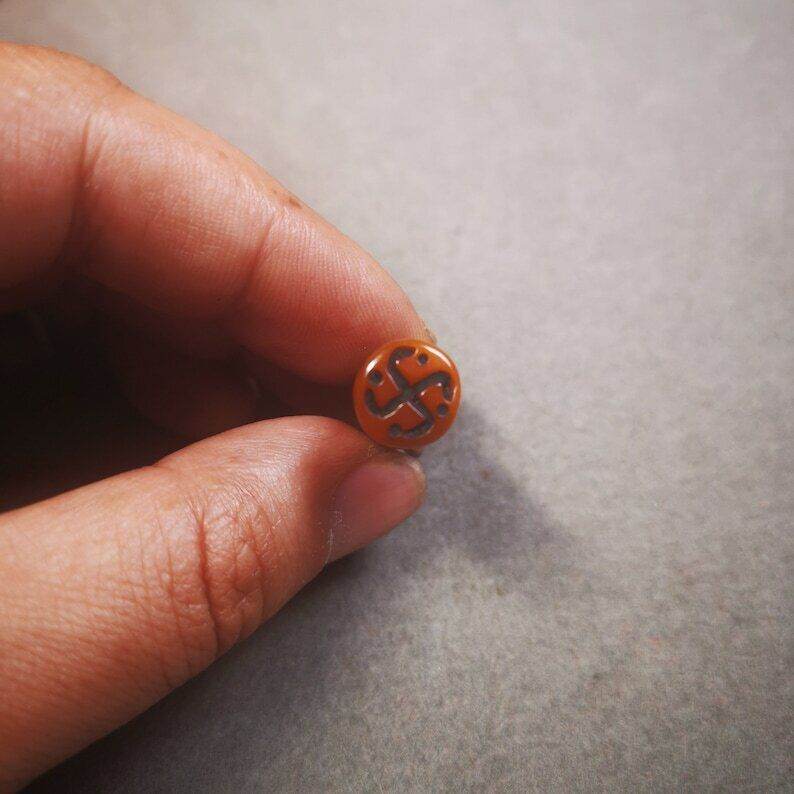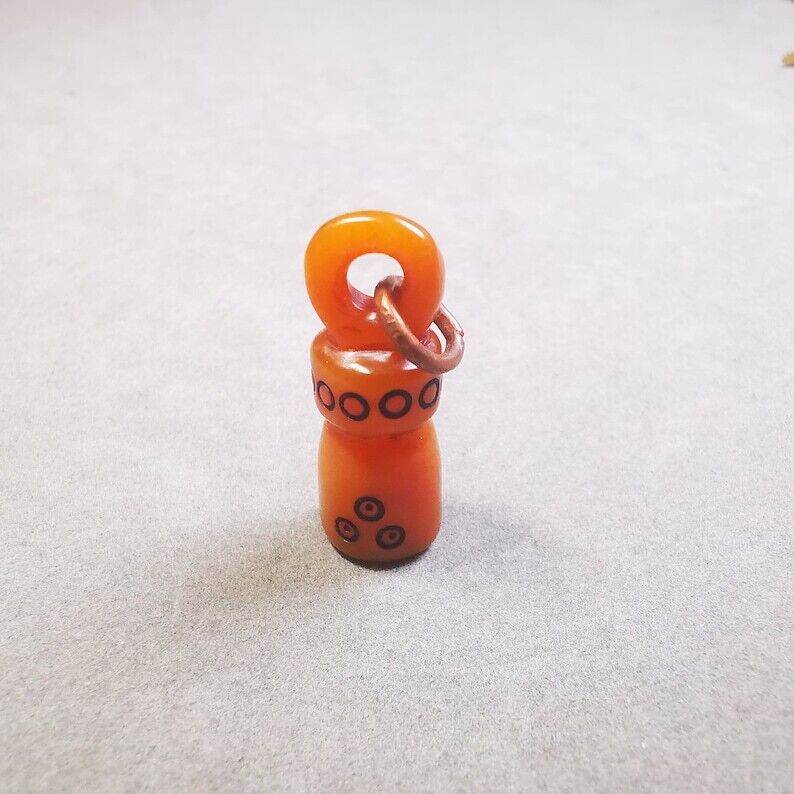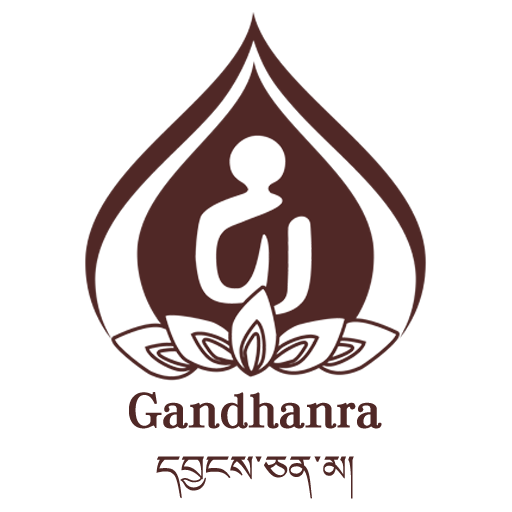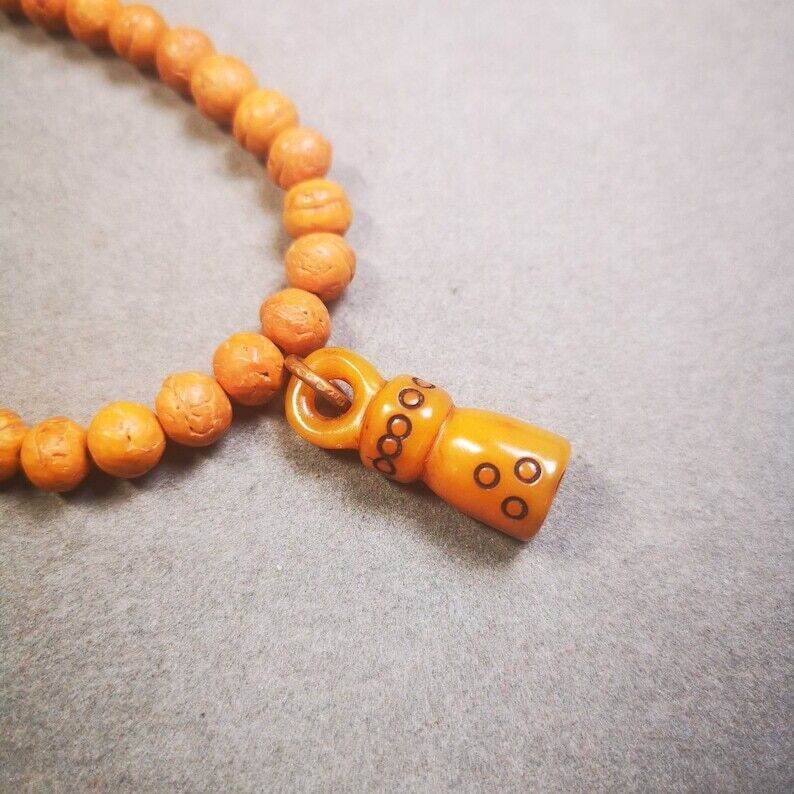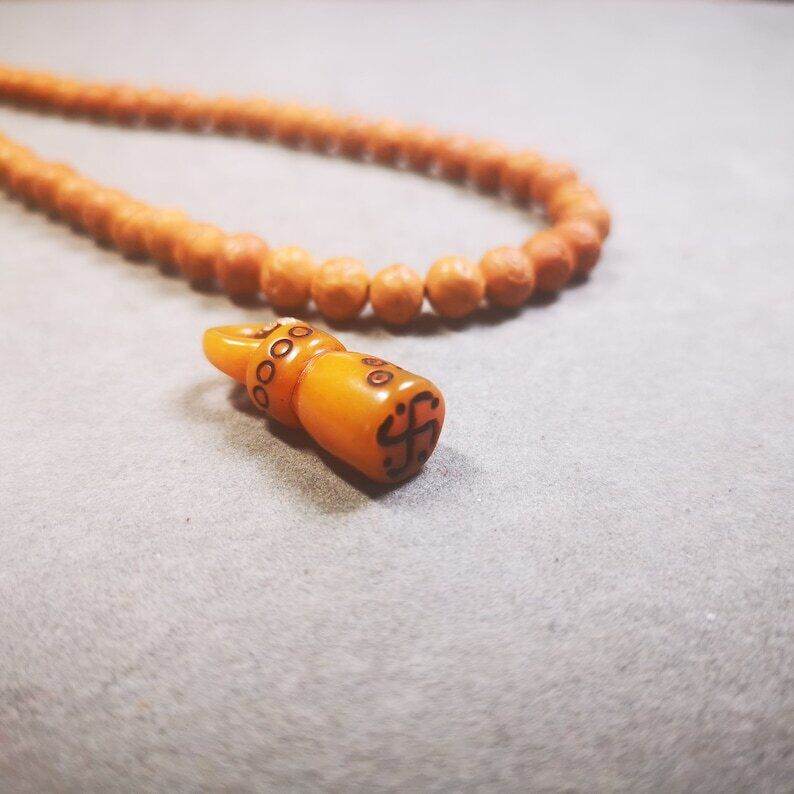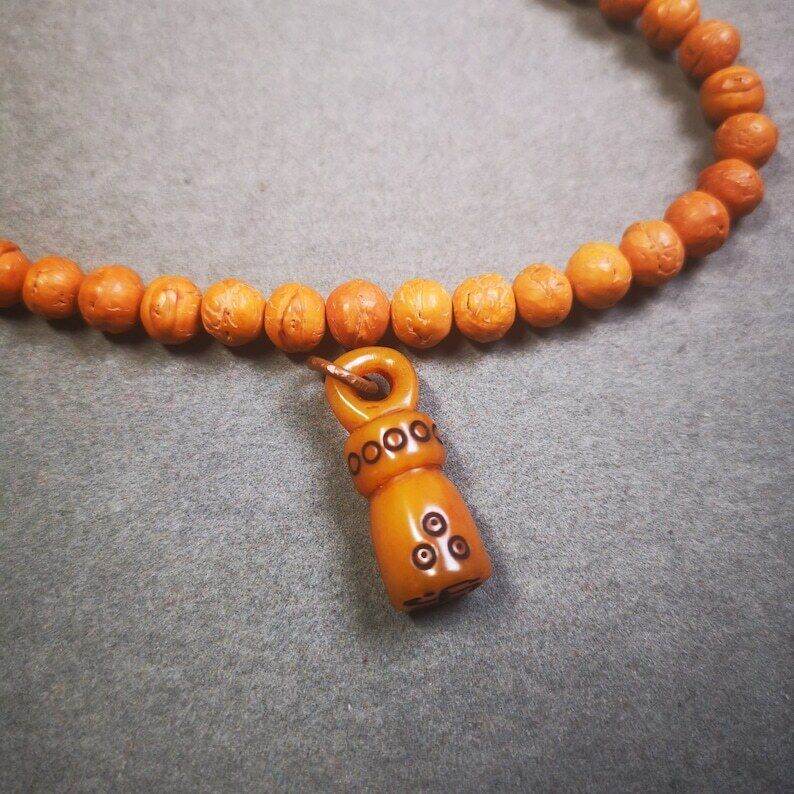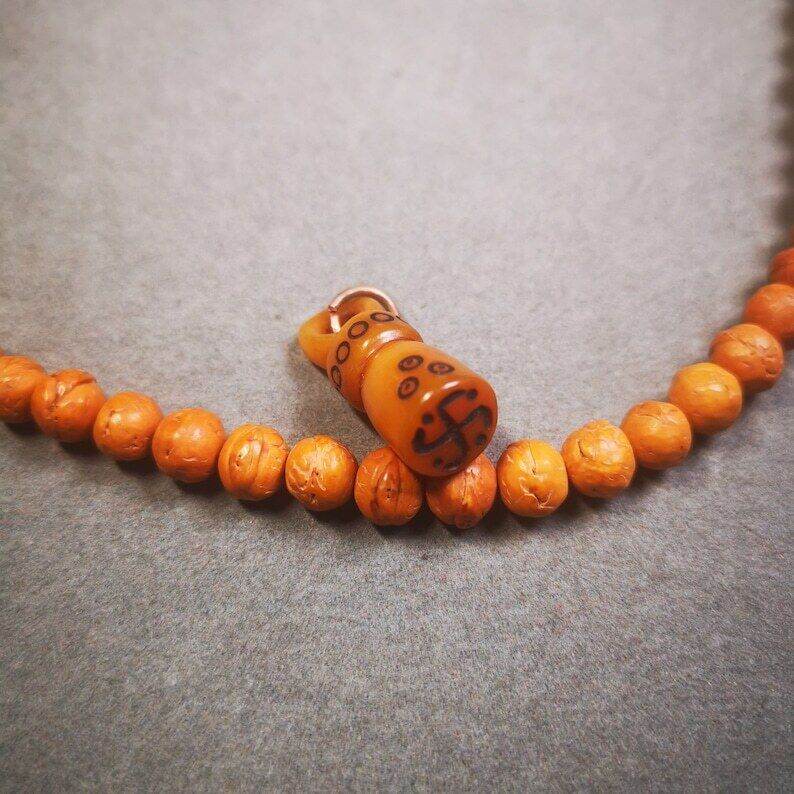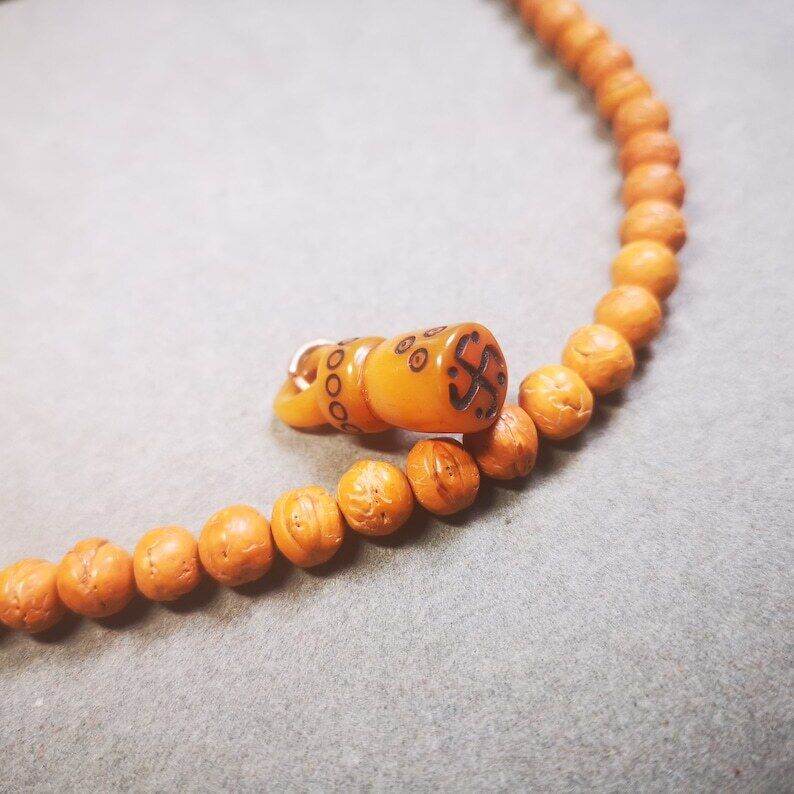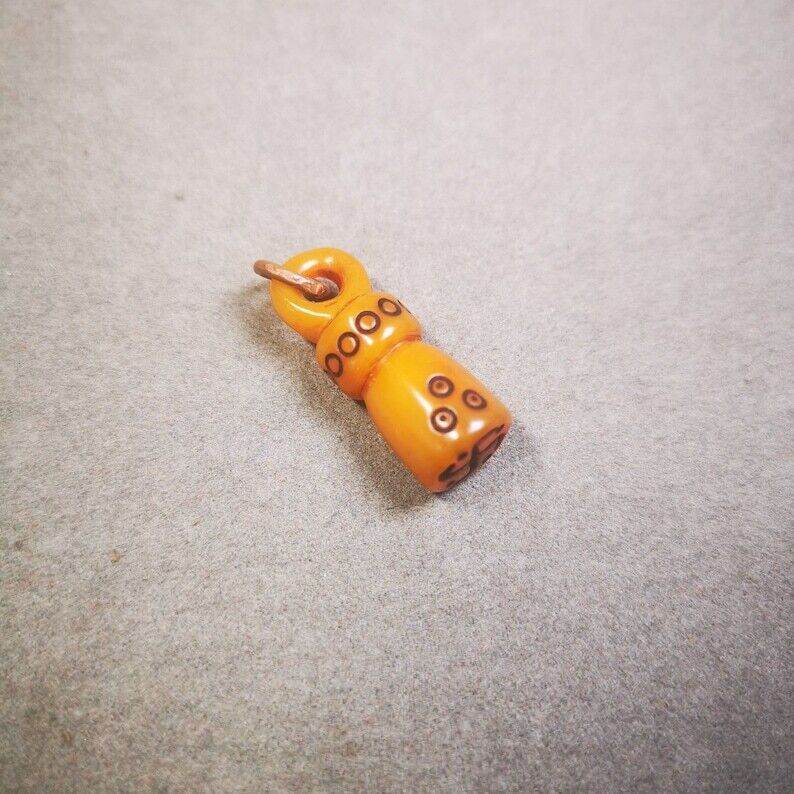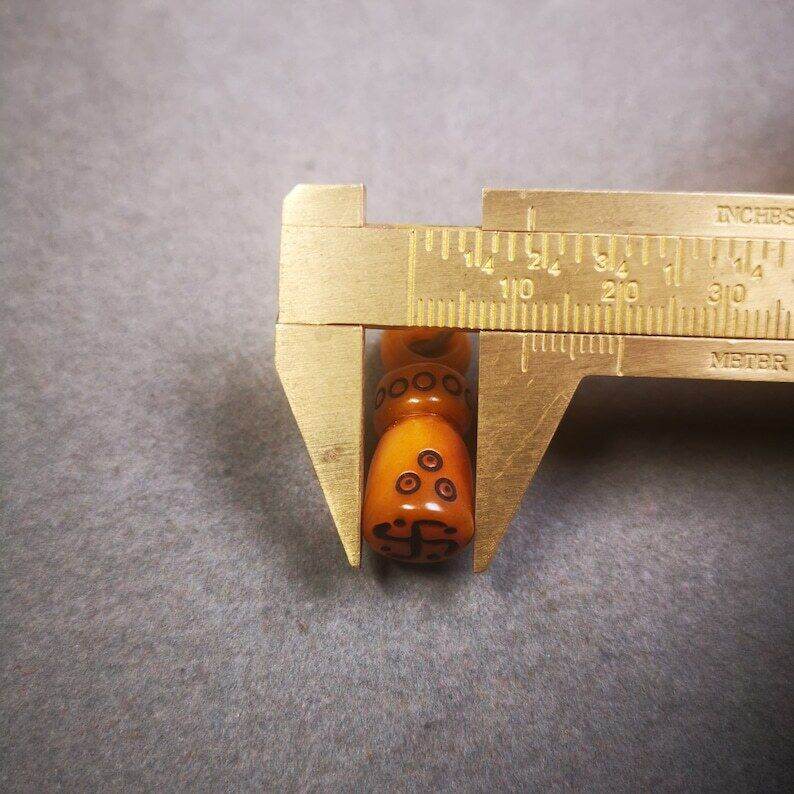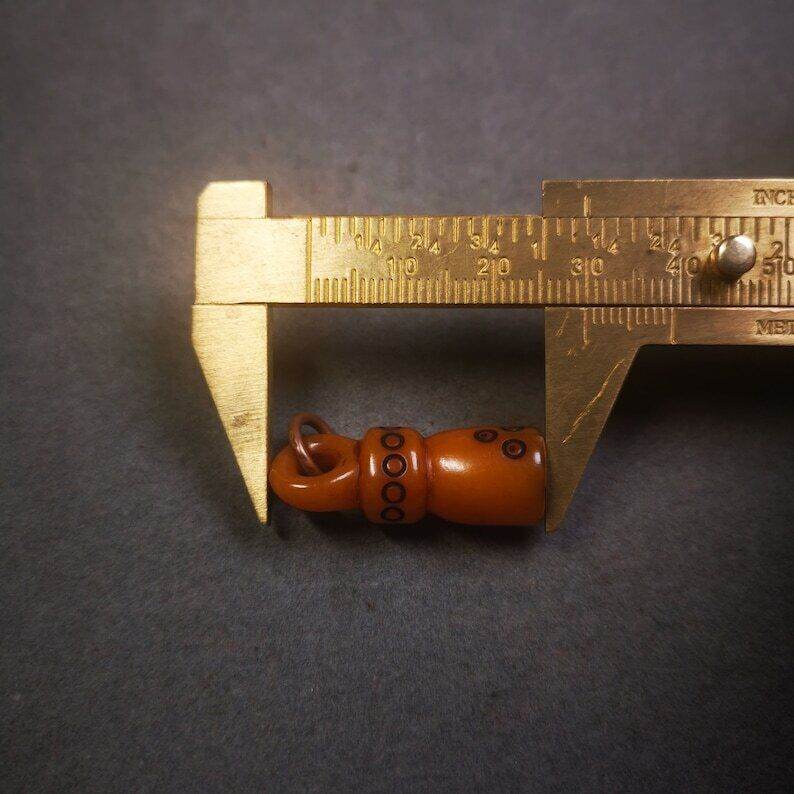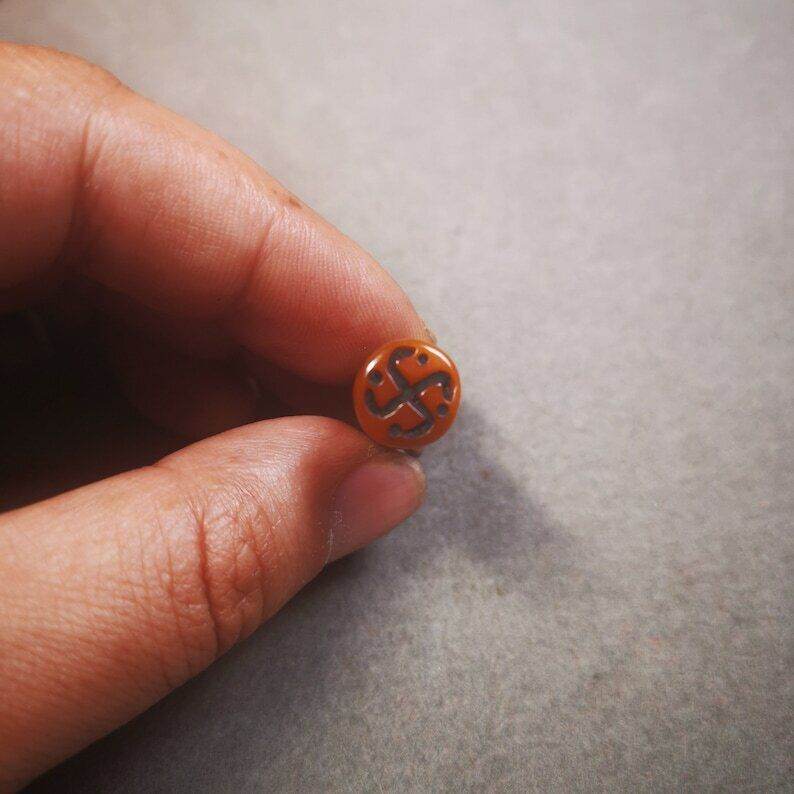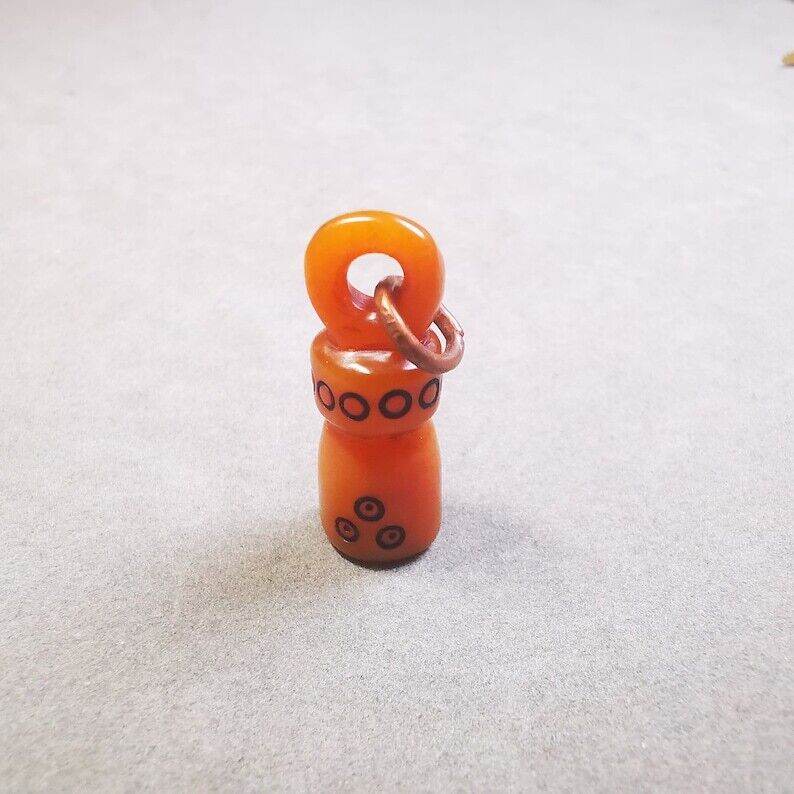Yak Bone Carved Seal Amulet, Swastika Pattern Stamp Pendant
Yak Bone Carved Seal Amulet, Swastika Pattern Stamp Pendant
Couldn't load pickup availability
❤This swastika stamp pendant is hand carved by Tibetan craftsmen from Tibet in 2000's.
From Hepo Town, Baiyu County, the birthplace of the famous Tibetan handicrafts.
You can use it as a mala pendant, or a separate necklace pendant,or keychain.
❤Details
Material:yak bone
Color:brown
Height:30mm / 1.18" Inches
Width: 11mm / 0.43 " Inches
You'll get 1 stamp pendant as pictures shown
❤ABOUT SWASTIKA
The swastika symbol, 卐 (right-facing or clockwise) or 卍 (left-facing, counterclockwise, or sauwastika), is an ancient religious icon in the cultures of Eurasia. It is used as a symbol of divinity and spirituality in Indian religions, including Hinduism, Buddhism and Jainism.
In the Western world, it was a symbol of auspiciousness and good luck.The swastika continues to be used as a symbol of good luck and prosperity in Hindu, Buddhist and Jain countries throughout Asia, including Nepal, India, Mongolia, Indonesia (specifically Bali), Thailand, China, Korea, Singapore and Japan, among others. It is also commonly used in Buddhist and Hindu marriage ceremonies.
The word swastika comes from Sanskrit: स्वस्तिक, romanized: svástika, meaning "conducive to well-being". In Hinduism, the right-facing symbol (卐) is called swastika, symbolizing surya ("sun"), prosperity and good luck, while the left-facing symbol (卍) is called sauwastika, symbolising night or tantric aspects of Kali.In Jainism, a swastika is the symbol for Suparshvanatha – the seventh of 24 Tirthankaras (spiritual teachers and saviours), while in Buddhism it symbolises the auspicious footprints of the Buddha.In several major Indo-European religions, the swastika symbolises lightning bolts, representing the thunder god and the king of the gods, such as Indra in Vedic Hinduism, Zeus in the ancient Greek religion, Jupiter in the ancient Roman religion, and Thor in the ancient Germanic religion.
